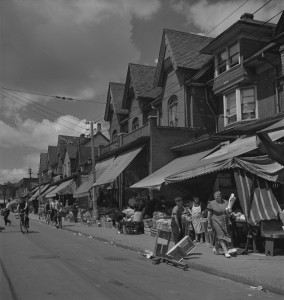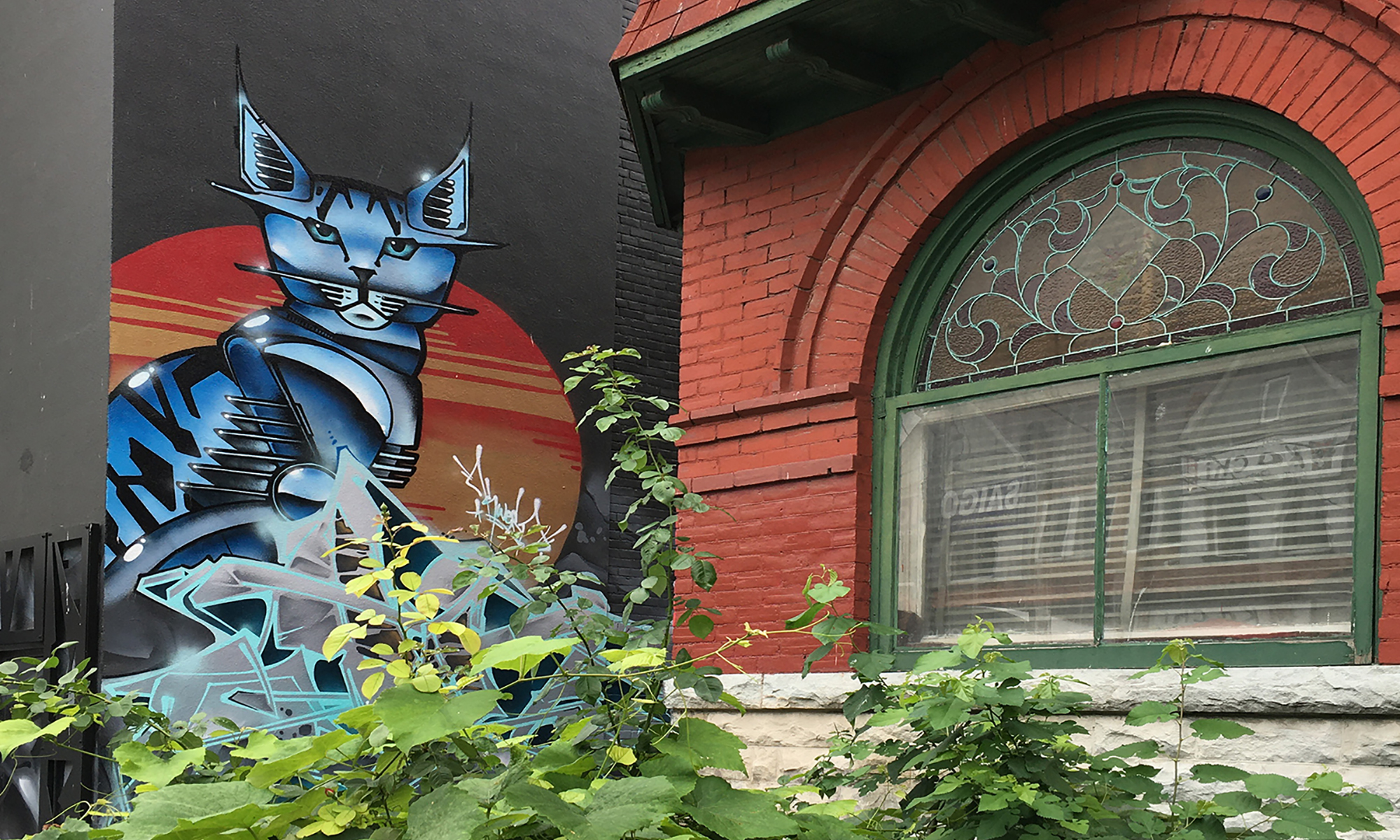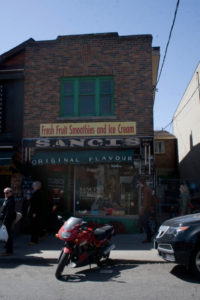Following the end of the Second World War in 1945, the population of the market began to change. Jewish families who had moved to the area from the Ward now had the funds to move to larger plots of land in parts of the city that were newly becoming available in the north and west.[i] The Jews were beginning to leave, but for some time the shops they had established remained.[ii] In the post-WWII era, supermarkets were also beginning to change – the higher availability of previously hard-to-find items meant that the market’s knack for specialty foods and ingredients was not as necessary. The remaining market merchants who did not move north and west with their customers altered their businesses accordingly, changing their shops to wholesale for restaurants in the area or going into entirely new lines of work.[iii]

Frances Borg recalled this shift from her youth. Her father Salvatore Sanci opened a banana store in 1928. Known as Sanci’s Tropical Foods at 66 Kensington Avenue, Sanci’s was the first non-Jewish merchant in the market – he moved to Toronto from Sicily in 1914.[iv] As his family’s business moved into the wholesale market, and small businesses became obsolete, it was proposed to Borg and his family that they branch out from bananas and start receiving mangoes shipped in from Jamaica. He accepted this change, and spurred on by a growing Jamaican presence in the market and Toronto in general, his family stopped selling wholesale bananas altogether in 1962.[v] This shift in both consumer and product is an important part of this moment in Kensington Market’s history, as the Market would continuously experience these shifts and changes throughout the 20th century, and into the 21st.
In the 1930s, many of Kensington’s residents worked on Spadina Avenue in garment factories, where unions were constantly organizing and re-organizing, resulting in a neighborhood that was in a continuous state of uproar.[vi] The unrest of the 1930s was affected by the Great Depression, but also political conflict. Large protests against anti-Semitism in Germany were organized and moved through the area, and political films and rallies were held at the Strand at Spadina and Dundas. Groups like the United Jewish People’s Order (UJPO) recruited and met in these spaces, along with the Jewish Women’s Working League, which led protests against prices in butcher shops and milk prices, and won.[vii]
Hungarians in Kensington arrived in three waves. The first occurred in the 1920s and 30s, a group one Kensington native calls ‘the old Hungarians.’ The second wave was the displaced persons who left Hungary after WWII in the late 1930s, and the third wave was comprised of people who came to the neighborhood and city following the 1956 Revolution.[viii]
From 1930 through the 1940s, the exclusively Jewish character of the market began to change, and what had once been a shtetl-like environment, providing Jewish residents with otherwise hard to find goods and services, began to evolve into a neighborhood for various recent Canadian immigrants finding their feet in a new nation. Kensington Market was fast becoming a multicultural neighborhood that provided a microcosmal space for Canada’s developing identity as a cultural mosaic.


